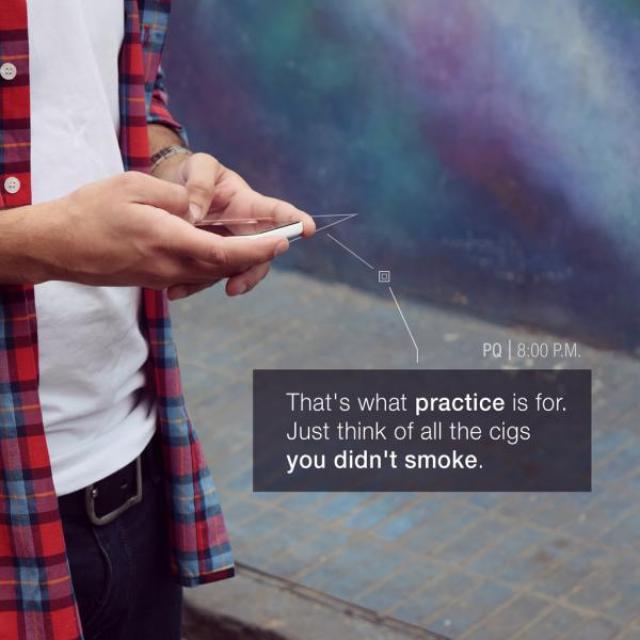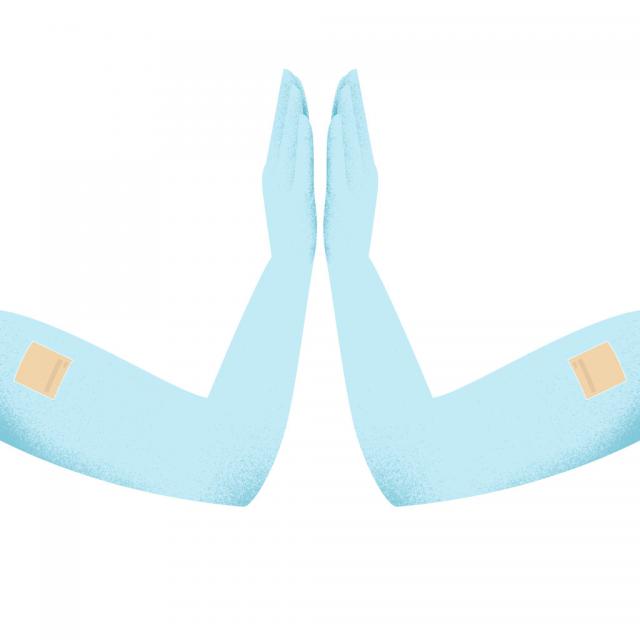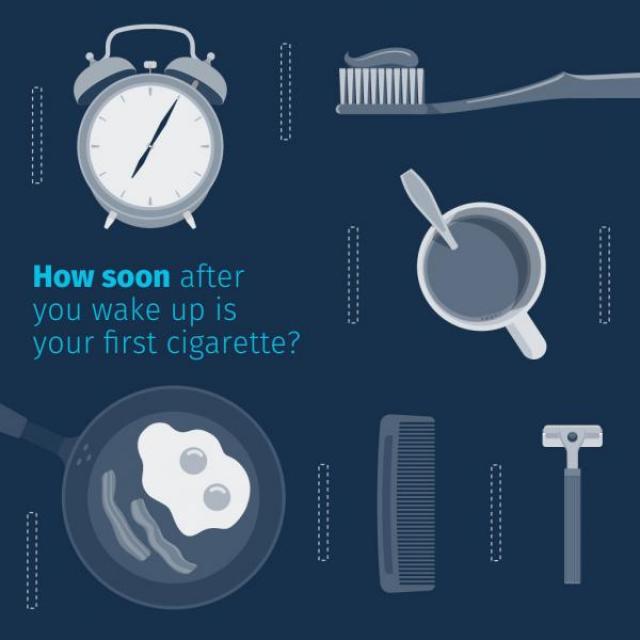Quitting is hard. But quitting can be a bit easier if you have a plan. When you think you’re ready to quit, here are a few simple steps you can take to put your plan into action.

Commit to Your Quit
Set Your Quit Date. The first step to becoming smokefree is to choose when you want to quit. Here are some tips to help you pick a quit date:
- Give yourself time to prepare. Getting prepared can help you build the confidence and skills you will need to stay smokefree.
- Don’t put it off for too long. Picking a date too far away gives you time to change your mind or become less motivated. Choose a date that is no more than a week or two away.
If you’re having a hard time setting a date, sign up for our Practice Quit text program to learn skills and become more comfortable with quitting for good. Practice quitting for 1, 3, or 5 days, and try the program as many times as you need.
Create Your Quit Plan. A personalized quit plan can help you stay focused, confident, and motivated to quit. Don’t worry if you’ve already started your quit, because making a plan now can help you stay on track.
Know Why You’re Quitting
Before you actually quit, it’s important to know why you’re doing it. Do you want to be healthier? Save money? Keep your family safe? If you’re not sure, ask yourself these questions:
- What do I dislike about smoking?
- What do I miss out on when I smoke?
- How is smoking affecting my health?
- What will happen to me and my family if I keep smoking?
- How will my life get better when I quit?
Still not sure? Different people have different reasons for quitting smoking. Get ready to stop smoking by thinking about why you want to quit.
Learn How to Handle Your Triggers and Cravings
Triggers are specific persons, places, or activities that make you feel like smoking. Knowing your smoking triggers can help you learn to deal with them.
Cravings are intense urges to smoke. Every craving is temporary, and having healthy ways to distract can help them fade more quickly. Plan ahead and come up with a list of activities you can do when you get a craving.
Find Ways to Handle Nicotine Withdrawal
During the first few weeks after you quit, you may feel uncomfortable and crave a cigarette. These unpleasant symptoms of quitting smoking are known as withdrawal. Withdrawal is common among smokers who quit, whether they are doing it cold turkey or with the help of medications, counseling, or other tools.
During withdrawal, your body is getting used to not having nicotine from cigarettes. For most people, the worst symptoms of withdrawal last a few days to a few weeks. During this time, you may:
- Feel a little depressed
- Be unable to sleep
- Become cranky, frustrated, or mad
- Feel anxious, nervous, or restless
- Have trouble thinking clearly
You may be tempted to smoke to relieve these feelings. Just remember that they are temporary, no matter how powerful they feel at the time.
One of the best ways to deal with nicotine withdrawal is to try nicotine replacement therapy (NRT). NRT can reduce withdrawal symptoms. And NRT can double your chances of quitting smoking for good. NRT comes in several different forms, including gum, patch, nasal spray, inhaler, and lozenge. Many are available without a prescription.
A lot of research has been done on NRT. It has been shown to be safe and effective for almost all smokers who want to quit. But teens, pregnant women, and people with severe medical conditions should talk to their doctor before using NRT.
If you plan to use NRT, remember to have it available on your quit day. Read the instructions on the NRT package and follow them carefully. NRT will give you the most benefit if you use it as recommended.
Explore Your Quit Smoking Options
It is difficult to quit smoking on your own, but quitting cold turkey is not your only choice. In fact, choosing another option may improve your chances of success. Check out:
- Try a text message program. Sign up for SmokefreeTXT online or text QUIT to 47848.
- Download a smartphone app. quitSTART helps you track cravings and understand your smoking patterns.
- Visit Smokefree on social media. Grow your support network and stay connected.
- Talk to an expert at a quitline. Call the National Cancer Institute Quitline at 1-877-44U-QUIT (1-877-448-7848) Monday through Friday from 9:00 a.m. to 9:00 p.m. or find your state’s quitline by calling 1-800-QUIT-NOW (1-800-784-8669).
- Chat with a quit smoking counselor. LiveHelp is Monday through Friday, 9:00 a.m. to 9:00 p.m. Eastern time. Also available in Spanish.
Find a quit method that might be right for you.
Tell Your Family and Friends You Plan to Quit
Quitting smoking is easier when the people in your life support you. Let them know you are planning to quit and explain how they can help. Here are a few tips:
- Tell your family and friends your reasons for quitting.
- Ask them to check in with you to see how things are going.
- Ask them to help you think of smokefree activities you can do together (like going to the movies or a nice restaurant).
- Ask a friend or family member who smokes to quit with you, or at least not smoke around you.
- Ask your friends and family not to give you a cigarette—no matter what you say or do.
- Alert your friends and family that you may be in a bad mood while quitting. Ask them to be patient and help you through it.
Support is one of the keys to successfully quitting. Find more ways to get support to help you quit.








